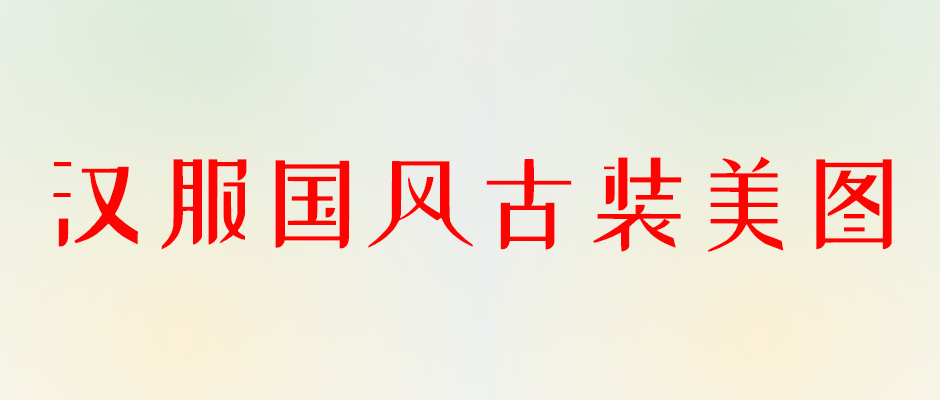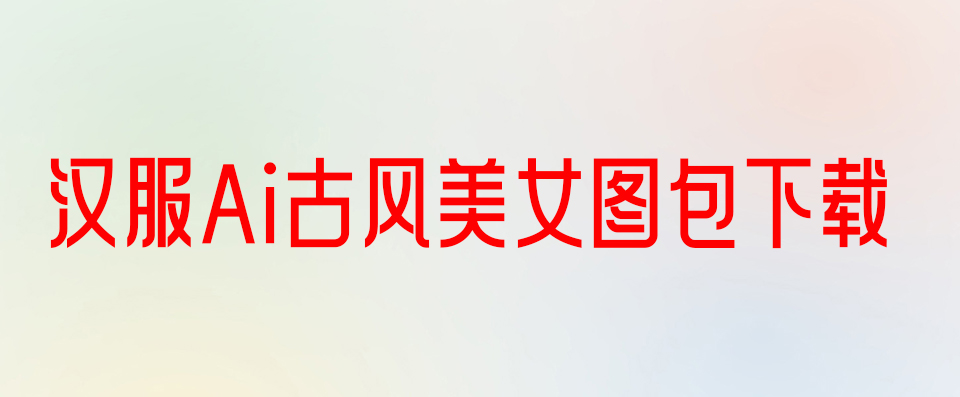在正确的用例中,布隆过滤器看起来就像魔法。这是一个大胆的说法,但在本教程中,我们将探讨这种奇怪的数据结构、如何最好地使用它,以及一些使用 Redis 和 Node.js 的实际示例。
布隆过滤器是一种概率性、单向数据结构。在这种情况下,“过滤器”一词可能会令人困惑;过滤器意味着它是一个活跃的事物,一个动词,但将它视为存储,一个名词可能更容易。使用简单的布隆过滤器,您可以做两件事:
- 添加一个项目。
- 检查之前是否未添加过某个项目。
这些是需要理解的重要限制 - 您无法删除项目,也无法在布隆过滤器中列出项目。此外,您无法确定过去是否已将某个项目添加到过滤器中。这就是布隆过滤器的概率性质发挥作用的地方——误报是可能的,但误报则不然。如果过滤器设置正确,误报的可能性会非常小。
存在布隆过滤器的变体,它们添加了其他功能,例如删除或缩放,但它们也增加了复杂性和限制。在继续了解变体之前,首先了解简单的布隆过滤器非常重要。本文仅介绍简单的布隆过滤器。
有了这些限制,您可以获得许多好处:固定大小、基于哈希的加密和快速查找。
当您设置布隆过滤器时,您需要为其指定一个大小。此大小是固定的,因此如果过滤器中有一项或十亿项,它永远不会增长超过指定的大小。当您向过滤器添加更多项目时,误报的可能性就会增加。如果您指定了较小的过滤器,则与使用较大的过滤器相比,误报率会增加得更快。
布隆过滤器建立在单向散列的概念之上。与正确存储密码非常相似,布隆过滤器使用哈希算法来确定传入其中的项目的唯一标识符。哈希本质上是无法逆转的,并且由看似随机的字符串表示。因此,如果有人获得了布隆过滤器的访问权限,它不会直接泄露任何内容。
最后,布隆过滤器速度很快。与其他方法相比,该操作涉及的比较次数要少得多,并且可以轻松存储在内存中,从而防止影响性能的数据库命中。
现在您已经了解了布隆过滤器的限制和优点,让我们来看看可以使用它们的一些情况。
设置
我们将使用 Redis 和 Node.js 来说明 Bloom 过滤器。 Redis 是 Bloom 过滤器的存储介质;它速度快,位于内存中,并且有一些特定的命令(GETBIT、SETBIT),可以提高实施效率。我假设您的系统上安装了 Node.js、npm 和 Redis。您的 Redis 服务器应该在 localhost 上的默认端口上运行,以便我们的示例正常工作。
在本教程中,我们不会从头开始实现过滤器;而是从头开始实现过滤器。相反,我们将重点关注 npm 中预构建模块的实际用途:bloom-redis。 bloom-redis 有一组非常简洁的方法:add、contains 和 clear。
如前所述,布隆过滤器需要哈希算法来生成项目的唯一标识符。 bloom-redis 使用众所周知的 MD5 算法,尽管它可能不适合 Bloom 过滤器(有点慢,有点过大),但可以正常工作。
独特的用户名
用户名,尤其是在 URL 中标识用户的用户名,需要是唯一的。如果您构建一个允许用户更改用户名的应用程序,那么您可能需要一个从未使用过的用户名,以避免用户名混淆和被攻击。
如果没有布隆过滤器,您需要引用一个包含曾经使用过的每个用户名的表,而大规模时这可能会非常昂贵。布隆过滤器允许您在用户每次采用新名称时添加一个项目。当用户检查用户名是否被占用时,您所需要做的就是检查布隆过滤器。它将能够绝对确定地告诉您所请求的用户名是否先前已添加。过滤器可能会错误地返回用户名已被使用,而实际上用户名尚未被使用,但这只是为了谨慎起见,不会造成任何真正的伤害(除了用户可能无法声明“k3w1d00d47”) .
为了说明这一点,让我们使用 Express 构建一个快速的 REST 服务器。首先,创建 package.json 文件,然后运行以下终端命令。
npm 安装bloom-redis --save
npm install express --save
npm install redis --save
bloom-redis 的默认选项大小设置为 2 MB。出于谨慎考虑,这是错误的,但它相当大。设置布隆过滤器的大小至关重要:太大会浪费内存,太小则误报率会太高。确定大小所涉及的数学非常复杂,超出了本教程的范围,但幸运的是,有一个布隆过滤器大小计算器可以完成这项工作,而无需破解教科书。
现在,创建 app.js 如下:
var
Bloom = require('bloom-redis'),
express = require('express'),
redis = require('redis'),
app,
client,
filter;
//setup our Express server
app = express();
//create the connection to Redis
client = redis.createClient();
filter = new Bloom.BloomFilter({
client : client, //make sure the Bloom module uses our newly created connection to Redis
key : 'username-bloom-filter', //the Redis key
//calculated size of the Bloom filter.
//This is where your size / probability trade-offs are made
//http://hur.st/bloomfilter?n=100000&p=1.0E-6
size : 2875518, // ~350kb
numHashes : 20
});
app.get('/check', function(req,res,next) {
//check to make sure the query string has 'username'
if (typeof req.query.username === 'undefined') {
//skip this route, go to the next one - will result in a 404 / not found
next('route');
} else {
filter.contains(
req.query.username, // the username from the query string
function(err, result) {
if (err) {
next(err); //if an error is encountered, send it to the client
} else {
res.send({
username : req.query.username,
//if the result is false, then we know the item has *not* been used
//if the result is true, then we can assume that the item has been used
status : result ? 'used' : 'free'
});
}
}
);
}
});
app.get('/save',function(req,res,next) {
if (typeof req.query.username === 'undefined') {
next('route');
} else {
//first, we need to make sure that it's not yet in the filter
filter.contains(req.query.username, function(err, result) {
if (err) { next(err); } else {
if (result) {
//true result means it already exists, so tell the user
res.send({ username : req.query.username, status : 'not-created' });
} else {
//we'll add the username passed in the query string to the filter
filter.add(
req.query.username,
function(err) {
//The callback arguments to `add` provides no useful information, so we'll just check to make sure that no error was passed
if (err) { next(err); } else {
res.send({
username : req.query.username, status : 'created'
});
}
}
);
}
}
});
}
});
app.listen(8010);
要运行此服务器:node app.js。转到浏览器并将其指向:https://localhost:8010/check?username=kyle。响应应该是:{"username":"kyle","status":"free"}。
现在,让我们通过将浏览器指向 http://localhost:8010/save?username=kyle 来保存该用户名。响应将是:{"username":"kyle","status":"created"}。如果返回地址 http://localhost:8010/check?username=kyle,响应将是 {"username":"kyle","status ":"已使用"}.同样,返回 http://localhost:8010/save?username=kyle 将导致 {"username":"kyle","status":"not -创建“}。
从终端中,您可以看到过滤器的大小: redis-cli strlen 用户名-bloom-filter。
现在,对于一项,它应该显示 338622。
现在,继续尝试使用 /save 路由添加更多用户名。您想尝试多少就尝试多少。
如果您再次检查尺寸,您可能会发现尺寸略有增加,但并非每次添加都会增加。很好奇,对吧?在内部,布隆过滤器在保存在 username-bloom 的字符串中的不同位置设置各个位(1/0)。然而,这些并不是连续的,因此如果您在索引 0 处设置一位,然后在索引 10,000 处设置一位,则两者之间的所有内容都将为 0。对于实际用途,一开始了解每个操作的精确机制并不重要,只需知道这一点即可这是正常的,您在 Redis 中的存储永远不会超过您指定的值。
新鲜内容
网站上的新鲜内容可以吸引用户回头客,那么如何每次都向用户展示新的内容呢?使用传统的数据库方法,您可以向表中添加一个包含用户标识符和故事标识符的新行,然后在决定显示一段内容时查询该表。正如您可能想象的那样,您的数据库将增长得非常快,尤其是随着用户和内容的增长。
在这种情况下,漏报(例如不显示看不见的内容)的后果非常小,这使得布隆过滤器成为一个可行的选择。乍一看,您可能认为每个用户都需要一个布隆过滤器,但我们将使用用户标识符和内容标识符的简单串联,然后将该字符串插入到我们的过滤器中。这样我们就可以对所有用户使用单个过滤器。
在此示例中,让我们构建另一个显示内容的基本 Express 服务器。每次您访问路由 /show-content/any-username (any-username 是任何 URL 安全值)时,都会显示一条新内容,直到该网站没有内容。在示例中,内容是古腾堡计划前十名书籍的第一行。
我们需要再安装一个 npm 模块。从终端运行: npm install async --save
您的新 app.js 文件:
var
async = require('async'),
Bloom = require('bloom-redis'),
express = require('express'),
redis = require('redis'),
app,
client,
filter,
// From Project Gutenberg - opening lines of the top 10 public domain ebooks
// https://www.gutenberg.org/browse/scores/top
openingLines = {
'pride-and-prejudice' :
'It is a truth universally acknowledged, that a single man in possession of a good fortune, must be in want of a wife.',
'alices-adventures-in-wonderland' :
'Alice was beginning to get very tired of sitting by her sister on the bank, and of having nothing to do: once or twice she had peeped into the book her sister was reading, but it had no pictures or conversations in it' }
如果您仔细注意开发工具中的往返时间,您会发现使用用户名请求单个路径的次数越多,所需的时间就越长。虽然检查过滤器需要固定的时间,但在本例中,我们正在检查是否存在更多项目。布隆过滤器能够告诉您的信息有限,因此您正在测试每个项目是否存在。当然,在我们的示例中,它相当简单,但测试数百个项目效率很低。
过时数据
在此示例中,我们将构建一个小型 Express 服务器,它将执行两件事:通过 POST 接受新数据,并显示当前数据(使用 GET 请求)。当新数据被 POST 到服务器时,应用程序将检查它是否存在于过滤器中。如果它不存在,我们会将其添加到 Redis 中的集合中,否则我们将返回 null。 GET 请求将从 Redis 获取它并将其发送到客户端。
这与前两种情况不同,误报是不行的。我们将使用布隆过滤器作为第一道防线。考虑到布隆过滤器的属性,我们只能确定某些东西不在过滤器中,因此在这种情况下,我们可以继续让数据进入。如果布隆过滤器返回的数据可能在过滤器中,我们将根据实际数据源进行检查。
那么,我们得到了什么?我们获得了不必每次都检查实际来源的速度。在数据源速度较慢的情况下(外部 API、小型数据库、平面文件的中间),确实需要提高速度。为了演示速度,我们在示例中添加 150 毫秒的实际延迟。我们还将使用 console.time / console.timeEnd 来记录 Bloom 过滤器检查和非 Bloom 过滤器检查之间的差异。
在此示例中,我们还将使用极其有限的位数:仅 1024。它很快就会填满。当它填满时,它将显示越来越多的误报 - 您会看到响应时间随着误报率的填满而增加。
该服务器使用与之前相同的模块,因此将 app.js 文件设置为:
var
async = require('async'),
Bloom = require('bloom-redis'),
bodyParser = require('body-parser'),
express = require('express'),
redis = require('redis'),
app,
client,
filter,
currentDataKey = 'current-data',
usedDataKey = 'used-data';
app = express();
client = redis.createClient();
filter = new Bloom.BloomFilter({
client : client,
key : 'stale-bloom-filter',
//for illustration purposes, this is a super small filter. It should fill up at around 500 items, so for a production load, you'd need something much larger!
size : 1024,
numHashes : 20
});
app.post(
'/',
bodyParser.text(),
function(req,res,next) {
var
used;
console.log('POST -', req.body); //log the current data being posted
console.time('post'); //start measuring the time it takes to complete our filter and conditional verification process
//async.series is used to manage multiple asynchronous function calls.
async.series([
function(cb) {
filter.contains(req.body, function(err,filterStatus) {
if (err) { cb(err); } else {
used = filterStatus;
cb(err);
}
});
},
function(cb) {
if (used === false) {
//Bloom filters do not have false negatives, so we need no further verification
cb(null);
} else {
//it *may* be in the filter, so we need to do a follow up check
//for the purposes of the tutorial, we'll add a 150ms delay in here since Redis can be fast enough to make it difficult to measure and the delay will simulate a slow database or API call
setTimeout(function() {
console.log('possible false positive');
client.sismember(usedDataKey, req.body, function(err, membership) {
if (err) { cb(err); } else {
//sismember returns 0 if an member is not part of the set and 1 if it is.
//This transforms those results into booleans for consistent logic comparison
used = membership === 0 ? false : true;
cb(err);
}
});
}, 150);
}
},
function(cb) {
if (used === false) {
console.log('Adding to filter');
filter.add(req.body,cb);
} else {
console.log('Skipped filter addition, [false] positive');
cb(null);
}
},
function(cb) {
if (used === false) {
client.multi()
.set(currentDataKey,req.body) //unused data is set for easy access to the 'current-data' key
.sadd(usedDataKey,req.body) //and added to a set for easy verification later
.exec(cb);
} else {
cb(null);
}
}
],
function(err, cb) {
if (err) { next(err); } else {
console.timeEnd('post'); //logs the amount of time since the console.time call above
res.send({ saved : !used }); //returns if the item was saved, true for fresh data, false for stale data.
}
}
);
});
app.get('/',function(req,res,next) {
//just return the fresh data
client.get(currentDataKey, function(err,data) {
if (err) { next(err); } else {
res.send(data);
}
});
});
app.listen(8012);
由于使用浏览器 POST 到服务器可能会很棘手,所以让我们使用curl 来测试。
curl --data“您的数据放在这里”--header“内容类型:text/plain”http://localhost:8012/
可以使用快速 bash 脚本来显示填充整个过滤器的外观:
#!/bin/bash for i in `seq 1 500`; do curl --data “data $i" --header "Content-Type: text/plain" http://localhost:8012/ done
观察填充或完整的过滤器很有趣。由于这个很小,你可以使用 redis-cli 轻松查看。通过在添加项目之间从终端运行 redis-cli get stale-filter ,您将看到各个字节增加。完整的过滤器将为每个字节 \xff 。此时,过滤器将始终返回正值。
结论
布隆过滤器并不是万能的解决方案,但在适当的情况下,布隆过滤器可以为其他数据结构提供快速、有效的补充。
如果您仔细注意开发工具中的往返时间,您会发现使用用户名请求单个路径的次数越多,所需的时间就越长。虽然检查过滤器需要固定的时间,但在本例中,我们正在检查是否存在更多项目。布隆过滤器能够告诉您的信息有限,因此您正在测试每个项目是否存在。当然,在我们的示例中,它相当简单,但测试数百个项目效率很低。
2、本站所有文章、图片、资源等如果未标明原创,均为收集自互联网公开资源;分享的图片、资源、视频等,出镜模特均为成年女性正常写真内容,版权归原作者所有,仅作为个人学习、研究以及欣赏!如有涉及下载请24小时内删除;
3、如果您发现本站上有侵犯您的权益的作品,请与我们取得联系,我们会及时修改、删除并致以最深的歉意。邮箱: i-hu#(#换@)foxmail.com










